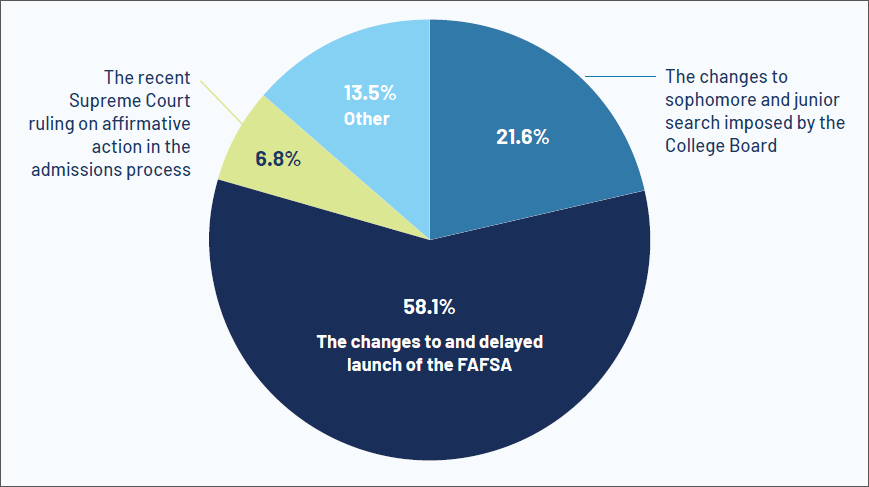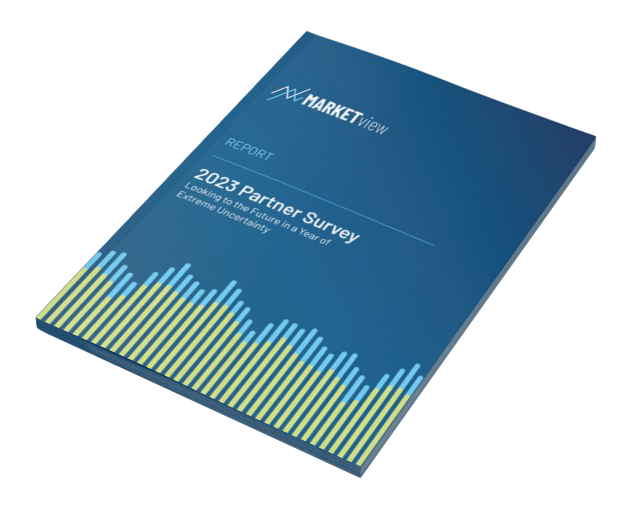For MARKETview’s first annual Partner Survey Report, we sought answers to how the growing number of disrupting factors within higher education are affecting the industry overall and, particularly, the Entering Class of 2024.
In this post, we’ll focus on part one of the survey, which covers how the latest crop of issues are impacting Enrollment Planning and Feasibility at a range of colleges and universities nationwide. In future posts, we’ll tackle the topics of Financial Budgeting and Support and Data Analytics and Proficiency. You can also download the full partner survey here.
Thanks for joining us – let’s jump right in!
Enrollment Planning and Feasibility: Three Key Findings
Achieving institutional goals is dependent on a multitude of factors, including support from leadership and the ability to identify (then smartly recruit) right-fit students — all while navigating major disrupters such as changes to sophomore and junior Search and test-optional policies. Here are three survey findings that stood out:
Q: How are your primary enrollment and revenue goals set each year?

Key Finding 1: Setting enrollment and revenue goals is a multi-team effort.
Ensuring enrollment offices and institutional leadership are on the same page was a common theme with 94.9% of respondents ranking “goal setting” as a collaborative pursuit.
The concept of having one person, or a small group, setting enrollment and recruitment goals may be nearing its end. These days, leaders from each division need to justify the output they receive along with any projected funding adjustments. This also makes having an in-depth understanding of your department’s ROI more important than ever.
Q: Which of the current disruptions is most likely to have the greatest impact on achieving your goals?

Key Finding 2: FAFSA changes reigned supreme as the biggest disrupting factor.
With so many time-sensitive decisions dependent on FAFSA data, it’s not a shock that more than 58% of respondents cited it as the biggest complication of the year.
In reality, given the most recent announcement from the Department of Education around FAFSA delays now running into March, the percentage would probably be even higher if we asked the same question today. The other disruptions listed just weren’t as time sensitive as the rollout of the Better FAFSA.
Q: Which statement best describes your stance on the future of test-optional admissions practices?

Key Finding 3: The vast majority of schools plan to remain test-optional for the foreseeable future.
It appears that COVID-19 may have altered testing policies forever with an overwhelming 95.9% of institutions planning to continue the policy in the years ahead, and zero schools reporting that they were going to add or reinstate a test-score requirement.
So, while many schools were already test-optional prior to 2020, the pandemic greatly accelerated the test-optional wave across the board.
We hope you found this brief excerpt from part one of the MARKETview Partner Survey Report helpful in navigating the current challenges impacting higher education. Please be on the lookout for parts two and three in the weeks ahead where we’ll continue to answer the question, “Is the enrollment profession at a crossroads?” in greater depth.
To see the full content of our survey right now, simply download the complete report below.
2023 MARKETview Partner Survey
Access insights from the inaugural MARKETview partner survey. See insights on the effects of the the key disruptors affecting the higher education industry, including updates to the FAFSA, the recent Supreme Court ruling on affirmative action, test-optional policies, and more.
Download the Report
